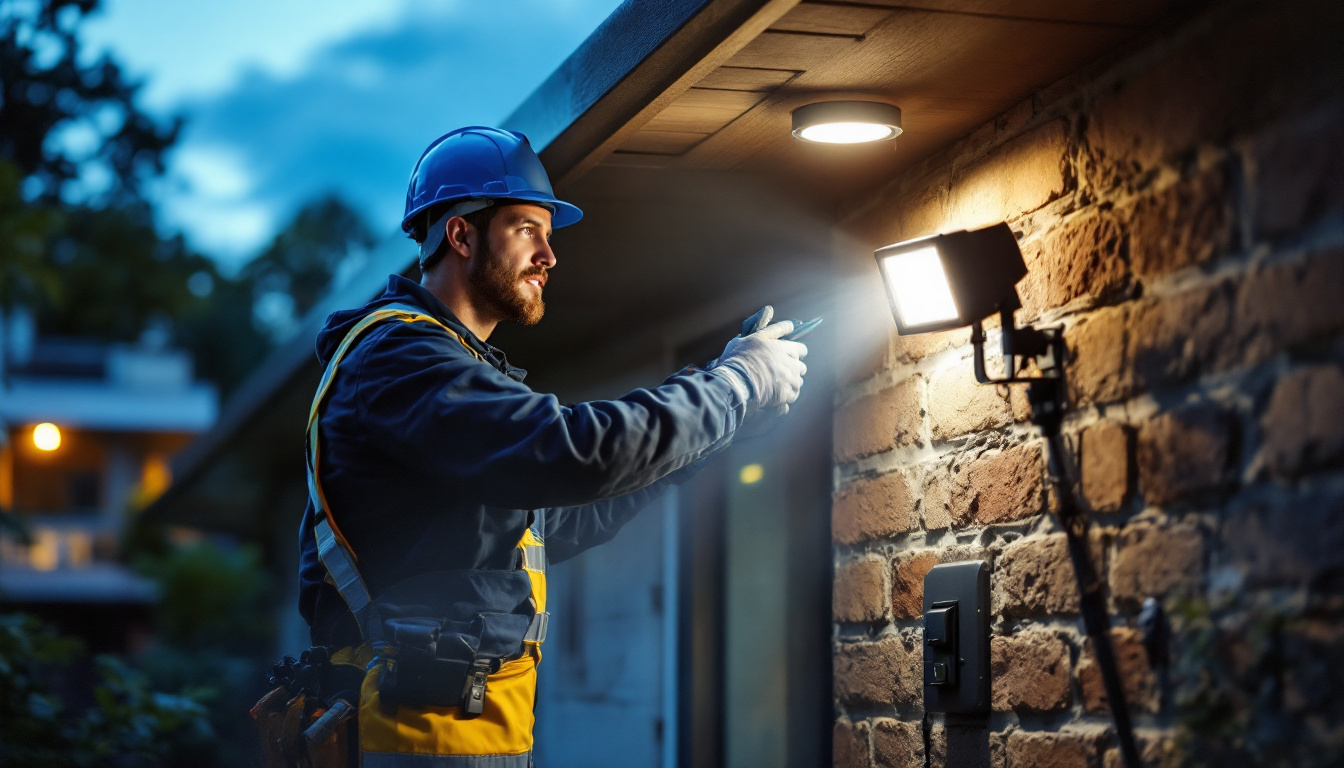
Keystone light bulbs have gained significant traction in the lighting industry, particularly among contractors who prioritize efficiency and performance. These bulbs are designed to provide optimal illumination while ensuring energy savings, making them an attractive option for both residential and commercial projects.
Characterized by their versatile designs and compatibility with various fixtures, Keystone bulbs stand out for their reliability and longevity. This article delves into the features of Keystone light bulbs, compares them with alternative options, and offers insights into what lighting contractors should consider when making their selection.
One of the most notable features of Keystone light bulbs is their energy efficiency. Many of these bulbs utilize LED technology, which consumes significantly less energy than traditional incandescent or halogen bulbs. This not only reduces electricity costs but also minimizes the environmental impact.
Additionally, Keystone bulbs offer a range of color temperatures, allowing contractors to choose the perfect ambiance for any space. From warm whites that create a cozy atmosphere to cool whites that enhance productivity, the flexibility in color options is a significant advantage. This adaptability makes them suitable for various applications, from residential living rooms to bustling office environments, where the right lighting can significantly influence mood and efficiency.
Durability is another hallmark of Keystone light bulbs. Constructed with high-quality materials, these bulbs are designed to withstand various conditions, making them suitable for both indoor and outdoor applications. Their lifespan often exceeds that of traditional bulbs, translating to fewer replacements and lower maintenance costs over time.
Moreover, many Keystone bulbs are resistant to shock and vibration, which is particularly beneficial in commercial settings where lighting fixtures may be subject to movement or impact. This resilience not only ensures consistent performance but also enhances safety in environments such as warehouses or factories, where lighting failures can lead to accidents. Furthermore, Keystone’s commitment to innovation means that they are continually developing new technologies, such as smart lighting options that integrate with home automation systems, allowing for even greater control over energy use and ambiance.
While Keystone light bulbs offer numerous advantages, it is essential for lighting contractors to consider alternative options available in the market. Understanding the strengths and weaknesses of each type can help in making informed decisions that align with client needs and project specifications.
Incandescent bulbs have long been a staple in the lighting industry. They are known for their warm light and excellent color rendering capabilities. However, they are also notorious for their energy inefficiency and shorter lifespan compared to LED options like Keystone bulbs.
For contractors, using incandescent bulbs may be suitable for specific applications where ambiance is critical, such as in residential settings. However, the long-term costs and environmental impact make them less favorable for large-scale projects. Additionally, the recent phase-out of traditional incandescent bulbs in many regions has pushed contractors to seek more sustainable alternatives, further emphasizing the need for a shift towards energy-efficient lighting solutions.
Compact fluorescent lamps (CFLs) were once heralded as the energy-efficient alternative to incandescent bulbs. While they do consume less energy, CFLs have their drawbacks, including longer warm-up times and a tendency to flicker. Additionally, they contain small amounts of mercury, which raises concerns about disposal and environmental safety.
In contrast, Keystone light bulbs, especially those using LED technology, do not have these environmental concerns and provide instant illumination without flickering. This makes them a more attractive option for contractors looking for reliable and eco-friendly lighting solutions. Furthermore, the versatility of LED technology allows for a range of color temperatures and brightness levels, enabling contractors to tailor lighting designs more precisely to the needs of their clients.
Halogen bulbs are a type of incandescent bulb that offers improved energy efficiency and a longer lifespan. They produce a bright, white light and are often used in applications requiring high-intensity lighting, such as track lighting and outdoor floodlights.
However, halogen bulbs still fall short in terms of energy savings compared to LED options. For contractors, while halogen bulbs may be suitable for specific applications, the overall benefits of Keystone bulbs in terms of energy efficiency and longevity make them a more compelling choice for most projects. Additionally, halogen bulbs can generate significant heat, which may necessitate further cooling solutions in enclosed spaces, adding to the overall project costs and complexity. In contrast, Keystone light bulbs operate at cooler temperatures, reducing the risk of heat-related issues and enhancing safety in various settings.
When selecting lighting solutions, contractors must consider various factors that can influence the effectiveness and efficiency of their projects. These considerations can help ensure that the chosen lighting meets both client expectations and regulatory standards.
Energy efficiency is perhaps the most critical factor for contractors. With rising energy costs and increasing emphasis on sustainability, choosing energy-efficient lighting solutions can lead to significant cost savings for clients. Keystone light bulbs, with their lower wattage and longer lifespan, provide an excellent return on investment.
Moreover, many regions offer incentives for using energy-efficient lighting, which can further offset initial costs. Contractors should be aware of these programs and inform clients about potential savings. Additionally, the long-term benefits of energy-efficient lighting extend beyond mere cost savings; they contribute to reducing the overall carbon footprint of a project, aligning with global sustainability goals. This aspect can be particularly appealing to environmentally conscious clients who prioritize green building practices.
The application and environment in which the lighting will be used are crucial in determining the appropriate bulb type. For instance, outdoor lighting may require bulbs that are weather-resistant and durable, while indoor spaces may prioritize color temperature and ambiance.
Keystone light bulbs offer a versatile solution suitable for various environments, making them a go-to choice for many contractors. Understanding the specific needs of each project can help in selecting the right lighting solution. Furthermore, factors such as the size of the space, the height of ceilings, and the intended use of the area can all affect lighting choices. For example, a high-ceilinged warehouse may benefit from high-bay LED fixtures that provide ample illumination, while a cozy restaurant might require softer, warmer lighting to create an inviting atmosphere.
Client preferences play a significant role in the selection of lighting solutions. Some clients may have specific aesthetic requirements or preferences for certain types of light. Understanding these preferences and educating clients about the benefits of different lighting options can lead to more satisfying outcomes.
Keystone light bulbs come in various styles and finishes, allowing contractors to cater to diverse client tastes while still providing energy-efficient solutions. Balancing aesthetics with functionality is key to successful lighting design. Additionally, the integration of smart lighting technology is becoming increasingly popular, allowing clients to customize their lighting experience through apps or voice commands. This trend not only enhances convenience but also allows for dynamic changes in mood and atmosphere, further emphasizing the importance of understanding client desires in modern lighting solutions.
Installation is a critical aspect of any lighting project. For contractors, understanding the nuances of installing Keystone light bulbs compared to alternatives can streamline the process and enhance overall project efficiency.
One of the advantages of Keystone light bulbs is their compatibility with a wide range of fixtures. This flexibility allows contractors to retrofit existing lighting systems without the need for extensive modifications. However, it is essential to verify compatibility with specific fixtures before installation.
In contrast, some alternative bulbs may require specific fixtures or ballasts, which can complicate the installation process and increase costs. Being aware of these requirements can help contractors avoid potential pitfalls during installation.
Electrical considerations are paramount when installing any lighting solution. Contractors must ensure that the wiring and electrical systems are adequate to support the chosen lighting options. Keystone light bulbs often operate at lower voltages, which can simplify wiring requirements.
However, it is crucial to adhere to local electrical codes and regulations, ensuring that all installations are safe and compliant. Proper training and knowledge of electrical systems can enhance the efficiency and safety of the installation process.
Post-installation support and maintenance are essential for ensuring the longevity and performance of lighting systems. Contractors should provide clients with guidance on how to care for their lighting installations, including cleaning and troubleshooting tips.
Keystone light bulbs, with their extended lifespan and durability, often require less maintenance than traditional bulbs. However, educating clients about the importance of regular checks and potential upgrades can further enhance the performance of their lighting systems.
In the ever-evolving landscape of lighting solutions, Keystone light bulbs have emerged as a formidable option for contractors seeking efficiency, durability, and versatility. While alternatives such as incandescent, CFL, and halogen bulbs have their place, the benefits of Keystone bulbs often outweigh those of traditional options.
When making lighting decisions, contractors should consider factors such as energy efficiency, application requirements, client preferences, and installation considerations. By understanding the strengths and weaknesses of Keystone light bulbs compared to alternatives, contractors can make informed choices that not only meet client needs but also contribute to a more sustainable future.
Ultimately, the choice of lighting solutions can significantly impact project success and client satisfaction. By prioritizing quality, efficiency, and aesthetics, lighting contractors can ensure that their projects shine brightly for years to come.
Ready to elevate your lighting projects with Keystone light bulbs and more? At LumenWholesale, we offer an exceptional range of spec-grade lighting products that combine quality with unbeatable wholesale value. Say goodbye to inflated markups and hello to premium lighting solutions that fit your budget. With our commitment to hassle-free bulk buying and free shipping, you can trust us to light up your projects efficiently and affordably. Don’t compromise on quality or cost. Choose LumenWholesale for Wholesale Lighting at the Best Value and make your lighting installations stand out.

Discover the essential compliance guidelines for LED outdoor flood lights that every lighting contractor should know.

Discover innovative strategies for lighting contractors to maximize cost savings with the brightest outdoor solar lighting solutions.

Discover the common pitfalls lighting contractors face when working with portable UV lighting.

Discover the crucial role patio lamps play in outdoor lighting projects and why lighting contractors should prioritize them.